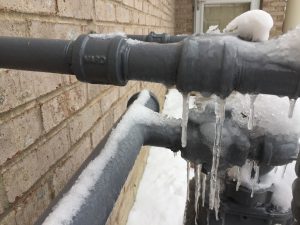Almost everyone will have their own individual conception involving 6 Ways to Prevent Frozen Pipes.

Cold weather can wreak havoc on your plumbing, particularly by freezing pipes. Here's just how to avoid it from occurring and what to do if it does.
Introduction
As temperature levels decline, the danger of frozen pipes boosts, possibly resulting in costly repair services and water damages. Comprehending just how to avoid icy pipelines is vital for homeowners in cool climates.
Recognizing Icy Pipelines
What triggers pipelines to ice up?
Pipes freeze when subjected to temperature levels below 32 ° F (0 ° C) for expanded periods. As water inside the pipelines ices up, it increases, taxing the pipeline walls and potentially triggering them to break.
Risks and damages
Frozen pipes can lead to water supply disturbances, residential or commercial property damages, and costly repair work. Ruptured pipes can flood homes and create comprehensive structural damages.
Indications of Frozen Pipeline
Determining icy pipelines early can prevent them from breaking.
Just how to recognize icy pipelines
Try to find decreased water flow from faucets, unusual smells or noises from pipelines, and visible frost on exposed pipelines.
Prevention Tips
Protecting susceptible pipelines
Wrap pipelines in insulation sleeves or use warmth tape to safeguard them from freezing temperature levels. Focus on pipes in unheated or exterior areas of the home.
Home heating techniques
Maintain indoor rooms effectively heated, especially locations with plumbing. Open cupboard doors to permit warm air to flow around pipes under sinks.
Shielding Outside Plumbing
Yard pipes and outside taps
Disconnect and drain yard hose pipes prior to winter months. Install frost-proof faucets or cover outdoor taps with insulated caps.
What to Do If Your Pipelines Freeze
Immediate activities to take
If you think frozen pipes, keep taps available to soothe pressure as the ice thaws. Make use of a hairdryer or towels taken in warm water to thaw pipes gradually.
Long-Term Solutions
Structural modifications
Consider rerouting pipes far from exterior walls or unheated locations. Include extra insulation to attic rooms, basements, and crawl spaces.
Upgrading insulation
Invest in high-grade insulation for pipes, attic rooms, and walls. Proper insulation aids maintain regular temperatures and lowers the danger of icy pipes.
Final thought
Stopping icy pipes needs positive actions and fast responses. By comprehending the reasons, indicators, and preventive measures, homeowners can shield their pipes during winter.
5 Ways to Prevent Frozen Pipes
Drain Outdoor Faucets and Disconnect Hoses
First, close the shut-off valve that controls the flow of water in the pipe to your outdoor faucet. Then, head outside to disconnect and drain your hose and open the outdoor faucet to allow the water to completely drain out of the line. Turn off the faucet when done. Finally, head back to the shut-off valve and drain the remaining water inside the pipe into a bucket or container. Additionally, if you have a home irrigation system, you should consider hiring an expert to clear the system of water each year.
Insulate Pipes
One of the best and most cost-effective methods for preventing frozen water pipes is to wrap your pipes with insulation. This is especially important for areas in your home that aren’t exposed to heat, such as an attic. We suggest using foam sleeves, which can typically be found at your local hardware store.
Keep Heat Running at 65
Your pipes are located inside your walls, and the temperature there is much colder than the rest of the house. To prevent your pipes from freezing, The Insurance Information Institute suggests that you keep your home heated to at least 65 degrees, even when traveling. You may want to invest in smart devices that can keep an eye on the temperature in your home while you’re away.
Leave Water Dripping
Moving water — even a small trickle — can prevent ice from forming inside your pipes. When freezing temps are imminent, start a drip of water from all faucets that serve exposed pipes. Leaving a few faucets running will also help relieve pressure inside the pipes and help prevent a rupture if the water inside freezes.
Open Cupboard Doors
Warm your kitchen and bathroom pipes by opening cupboards and vanities. You should also leave your interior doors ajar to help warm air circulate evenly throughout your home.

I stumbled upon that write up about 6 Ways to Prevent Frozen Pipes when doing a lookup on the internet. Liked our piece? Please quickly share it. Let another person locate it. Thanks a lot for taking the time to read it.
Book Service Now
Comments on “How to Avoid Frozen Plumbing in Winter: Professional Guidance”